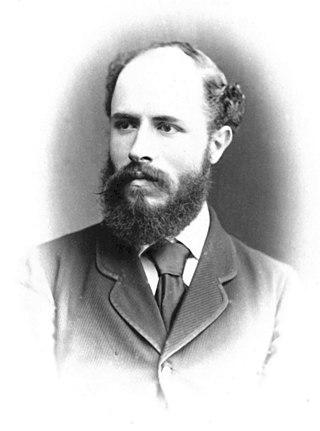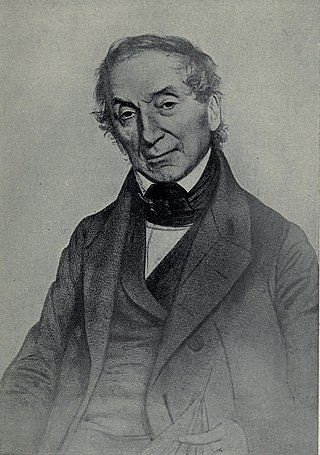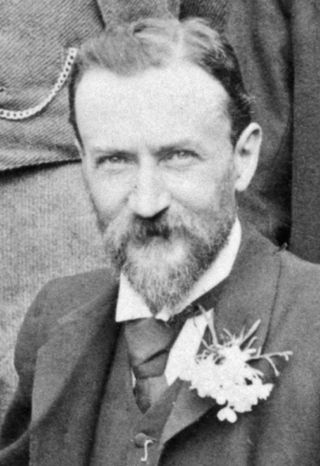| Glanycus | |
|---|---|
 | |
| Scientific classification | |
| Kingdom: | |
| Phylum: | |
| Class: | |
| Order: | |
| Family: | |
| Subfamily: | |
| Genus: | Glanycus |
Glanycus is a genus of moth of the family Thyrididae. [1]
| Glanycus | |
|---|---|
 | |
| Scientific classification | |
| Kingdom: | |
| Phylum: | |
| Class: | |
| Order: | |
| Family: | |
| Subfamily: | |
| Genus: | Glanycus |
Glanycus is a genus of moth of the family Thyrididae. [1]

James Wood-Mason was an English zoologist. He was the director of the Indian Museum at Calcutta, after John Anderson. He collected marine animals and lepidoptera, but is best known for his work on two other groups of insects, phasmids and mantises.

Alfred William Alcock was a British physician, naturalist, and carcinologist.

John Anderson was a Scottish anatomist and zoologist who worked in India as the curator of the Indian Museum, Calcutta.

Nathaniel Wolff Wallich FRS FRSE was a surgeon and botanist of Danish origin who worked in India, initially in the Danish settlement near Calcutta and later for the Danish East India Company and the British East India Company. He was involved in the early development of the Calcutta Botanical Garden, describing many new plant species and developing a large herbarium collection which was distributed to collections in Europe. Several of the plants that he collected were named after him.

Francis Walker was an English entomologist. He was born in Southgate, London, on 31 July 1809 and died at Wanstead, England on 5 October 1874. He was one of the most prolific authors in entomology, and stirred controversy during his later life as his publications resulted in a huge number of junior synonyms. However, his assiduous work on the collections of the British Museum had great significance.
Sir George Francis Hampson, 10th Baronet was an English entomologist.

Arthur Gardiner Butler F.L.S., F.Z.S. was an English entomologist, arachnologist and ornithologist. He worked at the British Museum on the taxonomy of birds, insects, and spiders.
William Stephen Atkinson was a British lepidopterist who worked for much of his life in India.

William Chapman Hewitson was a British naturalist. A wealthy collector, Hewitson was particularly devoted to Coleoptera (beetles) and Lepidoptera and, also, to birds' nests and eggs. His collection of butterflies, collected by him as well as purchased from travellers throughout the world, was one of the largest and most important of his time. He contributed to and published many works on entomology and ornithology and was an accomplished scientific illustrator.

Edwin Felix Thomas Atkinson, was an Irish lawyer in the Indian Civil Service who contributed in his spare time collecting insects and contributing to entomology.

The Zoological Survey of India (ZSI), founded on 1 July 1916 by the Ministry of Environment, Forest and Climate Change of the Government of India as a premier Indian organisation in zoological research and studies to promote the survey, exploration and research of the fauna in the country.

The Thyrididae comprise the family of picture-winged leaf moths. They are the only family in the superfamily Thyridoidea, which sometimes has been included in the Pyraloidea, but this isn't supported by cladistic analysis.

Colonel John Champion Faunthorpe was a British Army officer, big game hunter and sport shooter. Apart from serving in the Indian Civil Services in the United Provinces, he served in World War I in army intelligence and was in charge of controlling the press. After working briefly in the United States as part of the British Embassy, he returned to India to join Arthur Stannard Vernay on an expedition to collect specimens of South Asian mammals for the American Museum of Natural History. Mounted specimens of the large mammals they hunted were then exhibited in what was named the Vernay-Faunthorpe Hall.
John Henry Leech was an English entomologist who specialised in Lepidoptera and Coleoptera.
Argidava is a genus of moths in the family Geometridae erected by Francis Walker in 1863.

Lepidopterology is a branch of entomology concerning the scientific study of moths and the two superfamilies of butterflies. Someone who studies in this field is a lepidopterist or, archaically, an aurelian.

Maharaja Bahadur Sir Prodyot Coomar Tagore KCIE was a leading land owner, philanthropist, art collector, and photographer in Kolkata, India. He belonged to the Pathuriaghata branch of the Tagore family.

Stericta is a genus of snout moths. It was described by Julius Lederer in 1863.

Gaeana atkinsoni is a colourful cicada species and is the only member of the genus Gaeana that is found in southern India. Other species are found along the Himalayas and in Southeast Asia. It is endemic to the forests of the Western Ghats where it emerges in summer. Males are brightly coloured with a yellow and black forewing and a bright red hindwing that is visible in flight.
Omiodes maculicostalis is a species of moth in the family Crambidae described by George Hampson in 1893 from Srilanka.It is present in Srilanka and India.